|
Many of you will know that reflexology uses an applied pressure to initiate a reflex response, and we postulate that it does this via mechanosensitive receptors in the skin. Maybe you learnt that in order to have an effect on an organ or create a physiological response you had to apply a pressure of a certain intensity, but is that true? There is no evidence that tells us what amount of pressure we must apply, so whilst we may discuss light touch, knuckling, rubbing, thumb walking etc. the pressure we apply is purely subjective. In fact, we probably all change the amount of pressure we use according to the general health, age, and size of the client we are treating. But did you know that the skin surface can affect the pressure needed to effectively gain a physiological response? Or that skin thickness can vary between 1.5 and 4 mm depending on the area of the body? For example, a foot that is calloused requires a much greater pressure than a softer foot. As part of my PhD programme of research I wanted to know if there was any difference in the pressure applied when reviewing a person’s pain threshold and tolerance levels, so I carried out a study using a light pressure and my standard reflexology pressure and compared them against no treatment at all. Despite the different pressures, the results of the study revealed a significant increase in pain threshold (a person’s first pain sensation) from both my standard and light reflexology methods. It also revealed a significant increase in pain tolerance (the maximum level of pain one can tolerate) for my standard reflexology, but NOT for my light reflexology. To try to make sense of this I then went on to evaluate the forces of the pressures with a specific objective to measure three different pressure applications. These were a static pressure as used in Nerve Reflexology, a standard on/off dynamic pressure, and a light on/off dynamic pressure, (caterpillar walking). I obtained the Tactilus® Freeform Sensor System V3.1.27 (2007) from an American company who adapted it to suit the needs of my experiment. I went on to measure the pressure at various regions of the foot which included the medial edge of the bony foot, the arch, the heel, and the ankle. I did this on several different foot types so that I could look at the relationship between skin tone, skin texture, age, and the strength of the reflexology stimulus. The four areas of stimulation during the experimental procedure, a) medial edge, b) arch, c) heel d) ankle Physiological impact of pressure on skin tissueWhen skin is put under pressure it changes its geometric shape to accommodate deformation through the displacement of fluid and then returns to its original shape due to elastin in the fibres. Reflexologists are made aware that pressure on the foot sole can have an effect on blood and lymph via the circulatory system and it is the slowly adapting C-fibres of the nervous system that have been identified as being the chief responders in these vasodilatory mechanisms. It doesn’t take much to appreciate that an increased standing or static pressure can intensify the number of callouses in the heel and metatarsal regions. However, this can make it more difficult to effectively stimulate the underlying mechanoreceptors that effect such changes in circulation. My research indicated that using light touch in reflexology can impact pain threshold levels, as well as reducing stress and anxiety, but there is also evidence that static pressure may reduce tension in the paraspinal muscles via a rapid response directly on a nerve or nerve structure. The study I carried out was small with just nine people from a variety of ages (3-79 years), genders and ethnic groups. The different foot types included: normal adult (healthy tone and texture), calloused, moist, soft and spongy, child, oedematous, and hard (dry). What did the results show? As they are considered direct opposites my results focused on pressure applied to both normal and calloused feet. Physiologically there is very little subcutaneous tissue in the medial edge of the foot and the bony skeleton is of course much closer to the surface. What’s interesting about this is that under mechanical load, bone is able to dissipate energy more readily, which implies that pressure may need to be greater on bone in order to achieve a physiological response. The data from my research demonstrated differences of around 50% between my standard and light dynamic pressures (Figures C and D). What was interesting from the research though was that pressure applied to a normal healthy foot is clearly performed in a very precise load/unload pattern with small intermittent steps, (Figure A) reflecting the normal precision of the movement introduced by Ingham. However, in a calloused foot the load/unload impression is less precise (Figure B). Figure A shows the typical on/off caterpillar movement of classic reflexology with a maximum loading of 171.4kPa and a minimum loading of 27.5kPa. In Figure B the same movement performed on a calloused foot provides a maximum pressure loading of 117.2kPa and a minimum of 22.1kPa. The average maximum shows a variation of around 50% for the maximal applied pressure between a normal healthy foot and a calloused foot. Maximum average pressure (kPa) for static, dynamic standard pressure (SR) and dynamic light pressure (LR) on a) normal healthy foot and, b) calloused foot. u Static pressure n Standard reflexology dynamic pressure l Light reflexology dynamic pressure. The experiment showed that pressure applied from a static application was greater than either the standard or light dynamic pressure across all foot regions, and represents the highest maximum average values across the entire experiment. This may be why nerve reflexology has a greater impact on a nerve or nerve tissue than does the usual caterpillar walking of classic reflexology, although research in this area has yet to be validated.
Discussion Most reflexology techniques incorporate the use of a two-handed method of application, inasmuch that whilst one hand holds the foot the other hand stimulates it. Whether it is the tactile sensation acting singly or in combination with the stimuli that provoke a reaction in the cell is unclear at present. However, experience indicates that if the comparisons of reflexology stimulation are matched to the literature on impact of pressures on blood circulation, cellular change, and the mechanisms involved in pain, it would be reasonable to assume that reflexology can initiate physiological change, regardless of the pressure applied. Addendum I recently published an article on my Facebook business page ‘Reflexmaster’ about the two Nobel prize winners for Physiology or Medicine, David Julius and Ardem Parapoutian. Their research on the PIEZ02 receptor and its impact on allodynia, (an extreme reaction to a light touch), may well help throw more light on the mechanism of action of reflexology for supporting clients in pain, and is an incredibly exciting area for future studies. The PIEZ02 ion channel is light-touch sensitive and because both tissue injury and inflammation markedly alter touch perception, normally innocuous sensations become intensely painful. If reflexology can emulate the studies carried out by cell biologists to reduce the sensitivity of the PIEZ02 receptor, we may well be able to demonstrate more scientifically the mechanism of action for its benefits on pain. First published in my PhD thesis ‘An investigation into the efficacy of reflexology on acute pain in healthy human subjects’, Carol Samuel, 2011, University of Portsmouth. Dr Carol Samuel PhD, FFHT, HMAR [email protected] www.reflexmaster.co.uk
1 Comment
Moving on...moving forward Much like everyone else I too am now beginning to find my feet and thinking about moving on and moving forward with my life. I have spent the past nine or ten months writing my book 'The Tenacious Student' and many of you have asked me to notify you when it is available to purchase. I am delighted to tell you that it is available on my website now: https://www.reflexmaster.co.uk/store/p14/store/p14/The_Tenacious_Student.html and you can order your signed copy for an anticipated delivery date of around mid July. The book is reasonably priced at just £19.99 + the appropriate post and packaging and if you want to find out more, do log on to the Reflexology Book Club here: https://fb.me/e/4HmM5uyUQ where you will be able to listen to my introductory talk on the book. I would however point out to you that the book is more than just an autobiography of my PhD journey, it also talks of the experiments I carried out, the reasons I needed to carry out those experiments and the science behind it all. Alongside that, the journey taught me a lot of life lessons and I share those with you in the hope that you may be inspired by my journey. Workshops...online and face to face Many of my workshops across the pandemic have been online and I am grateful for the support that was shown to me, but especially for your faith in my ability to put the details across in a meaningful and productive way. Your feedback has indicated that you are happy with your learning and that you were able to gain as much from the online workshops as you might from face to face. That said, it is now time to get back to the hands-on practical face to face learning that I feel drawn to and I am now beginning to schedule dates/venues for the remainder of 2021. If you are interested in taking CPD for supporting clients in pain, I have a number of different workshops available which you will find here: https://www.reflexmaster.co.uk/courses.html The Nerve Reflexology diploma training is going through change at the moment and in the process will become a blended learning programme. What does that mean? It means that most of the theory for the course will be provided online so that you may absorb and work through the information at your own pace. The practical elements will of course continue face to face as will the exams. In the meantime, I highly recommend that anyone wishing to take up a programme of learning in nerve reflexology, should consider taking the two-day introductory workshop. COMING SOON...New Online workshop
MEASUREMENT TOOLS IN CLINICAL PRACTICE Many practitioners are confused about using measurement tools in clinical practice, so this workshop will give you an idea of the what? why? how? and when? If you have ever wondered how effective your treatments are in real terms or how you can demonstrate an effect to your client, this workshop will be right up your street. Measuring the effectiveness of what you can do to help:
I am planning that this workshop will be ready for circulation by the end of June, so do keep an eye on my website https://www.reflexmaster.co.uk/courses.html for further details. The first seven months of 2019 absolutely whizzed by and I was so busy that my feet just didn’t touch the ground. By the end of July, I was well and truly ready to take a break. Thank you all so very much for your wonderful support and commitment, I have felt absolutely blessed to have had the opportunity of meeting and sharing knowledge with so many wonderful and enthusiastic practitioners. Sadly, the final part of 2019 was an extremely difficult and challenging time for me personally and I was forced to cancel some of my workshops as a result. For those of you that it affected, I can only apologize and hope that you will be free to join me again in 2020. My time out taught me many things both personally and professionally, and whilst I am determined to continue teaching, I will not be offering as many workshops or travelling as much as I have done in the past. The upside is that I am looking at ways in which I can provide some online training for at least some of my workshops and will be concentrating on developing new and interesting workshops for the future. My first new workshop for 2020 is all about the inflammatory effects of stress and how that affects your pain responses. PAIN, STRESS AND THE INFLAMMATORY RESPONSE is a subject I have written about previously https://www.fht.org.uk/article/stress-pain-and-reflexology and continue to research. There is also a strong link between the Vagus nerve and inflammation and those of you who are AoR members will have read my article on this in the December 2019 issue. It is important to understand that stress can have a huge impact on your physiological and mental well-being and with reflexology we have a fantastic tool in our hands to help those who need our support. For details of workshops currently available, please take a look at my website: https://www.reflexmaster.co.uk/about-pain-stress-and-inflammation.html More will be added as soon as I can confirm the venues and dates. 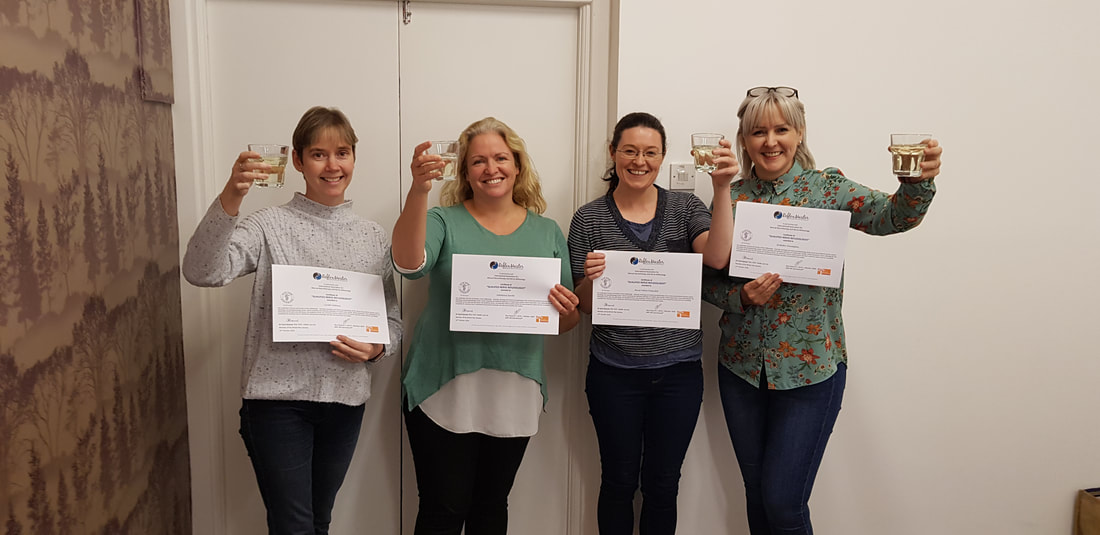 NERVE REFLEXOLOGY DIPLOMA We started out with ten excited and keen practitioners for the very first NERVE REFLEXOLOGY DIPLOMA in Ireland, but as time progressed students began to drop out, one by one. The reasons were many and varied and in October 2019 the remaining four attendees graduated. These four amazing practitioners put in the effort and were rewarded with the status of ‘Qualified Nerve Reflexologist’. They are one of only five practitioners in the whole of Ireland. Huge congratulations to Linda Colhoun, Anne-Marie McQuaid, Catherine Smith and Siobhan Mognahan. I am so very proud of you all. Nerve Reflexology is a complex subject and certainly not for the faint-hearted. It is challenging but rewarding, commands both your time and your full commitment. It takes you into subject areas you may have previously had very little exposure to and study time outside of the workshops is an important aspect of your ongoing learning. The next Nerve Reflexology Diploma training will be held in Portsmouth (UK), bookings are open and the dates have now been posted on my website https://www.reflexmaster.co.uk/nerve-reflexology-diploma.html If you feel up for the challenge and are prepared to commit your time, effort and finances, then I would love to hear from you. CANADA 2020 I will once again be travelling to Canada in 2020. This time to speak at the 'Reflexology Association of Canada' conference in Victoria, alongside my colleagues Barbara Scott and Sally Kay. I will also be offering a two-day post conference workshop on ‘Pain in Cancer Survivors’ on 27th/28th April. If you are coming along to the conference and are interested in booking onto my workshop, you can do so here: https://reflexologyconference.com/pain-in-cancer-survivors/ On the other hand, if you are unable to attend the workshop in Victoria, I will be running the same workshop in Toronto on 26th/27th September 2020. You can book here: https://www.reflexmaster.co.uk/pain-in-cancer-survivors.html PAIN IN CANCER SURVIVORS Last year I wrote that I was seeking funding for the research protocol I had prepared for ‘Pain in Cancer Survivors’; to date, I have not yet managed to secure that funding, but I will continue to knock on doors until one of them opens for me. In the meantime, I continue to teach the workshop and have had some wonderful feedback from attendees. Not only has the sequence proved beneficial for Chemotherapy Induced Neuropathy, but it has also benefited those with MS and diabetic neuropathy, with an additional benefit for general pain conditions too. The ‘Video on Demand’ sequence for this protocol was previously hosted by VIMSY but I was advised at the end of 2019 that by April 2020, VIMSY will disappear as a hosting platform, so I am in the throes of trying to make the video available through one of my other platforms. For those of you who have already purchased access to the video sequence, you will continue to be able to view it through the current site and when things change, you will be notified. 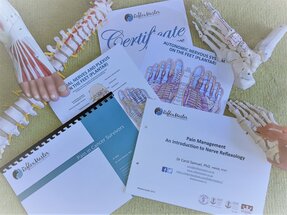 PAIN MANAGEMENT – AN INTRODUCTION TO NERVE REFLEXOLOGY This workshop has undergone a small change to its structure for 2020. Instead of an emphasis on back and neck pain, the emphasis will be on low back and pelvic pain. There will be no pre-course learning materials sent out in advance and the workshop will take on a slightly different focus. The techniques taught can be used as a stand-alone treatment or added to your current reflexology skills for a more in-depth and longer session. For information on the course dates for 2020 please visit: https://www.reflexmaster.co.uk/course-dates.html Thanks again for your support and for those new to my blogs and who are interested to learn more about pain management with reflexology, I look forward to meeting you. May this year prove to be your most interesting year so far!  Nerve Reflexology Diploma 2018 saw lots of changes for me in terms of what I teach in my CPD workshops but importantly it was an absolute pleasure to meet so many new practitioners and share my knowledge and experiences in the field of Pain Management in Reflexology. Nico Pauly of MNT-NR International, with whom I was an assistant teacher for almost 13 years handed me the reins to the UK training of the Nerve Reflexology Diploma and it is set to run for the first time this year in both Northern Ireland and Leicester. https://www.reflexmaster.co.uk/nerve-reflexology-diploma.html . When I originally trained in Nerve Reflexology I found it difficult to understand all the new terminology, the clinical reasoning and the finite details of the Nervous system. So, before I started developing it here in the UK I decided to carry out some research utilizing skills from business students at the University of Portsmouth. We sent out a survey and those of you who responded told us that you wanted to learn the theory online with face to face practical days. Unfortunately, after doing a full cost-analysis on my behalf, it turned out, this is not a cost-effective way to learn. It also turned out that despite already offering the diploma in module format not everyone was able to, or indeed wanted to, continue past the first module. I travel across the UK to teach these modules and as time went by, it became less and less viable to continue teaching the diploma in this way. In June 2018 we held a meeting of teachers with the MNT-NR board and agreed to retain the original format of teaching the diploma at three separate levels. The ideas being, you can dip in and out when/where you choose, for example, you can do Level 1 here in the UK, and perhaps go across to Denmark and do Level 2 with TouchPoint, or perhaps to Belgium with the Master himself, Nico Pauly and his team. 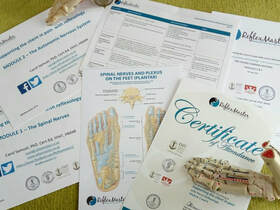 Pain Management – An Introduction to Nerve Reflexology The two-day workshop on Pain Management an Introduction to Nerve Reflexology continues to do well and will continue to be taught in 2019. Some new workshop dates have already been set up and more will be added as/when I can find suitable venues. You can find out more here: Course Dates What practitioners found challenging in this workshop was the detailed information on the nervous system and the clinical reasoning. So, for 2019 I am looking at ways in which I can make the learning more fun, more interactive and easier to learn. In addition to the pre-course learning materials, post course links to video routines and a closed Facebook support group, there will be more practical time and a slower pace of learning. 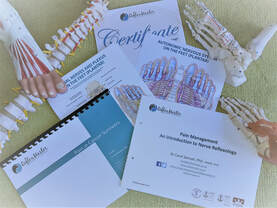 Pain in Cancer Survivors In 2010 I was fortunate enough to take up a position at the University of Surrey as a Research Fellow, where I carried out research on the late and long-term consequences of Cancer and its treatments. As a Cancer Survivor myself I know only too well the effects of treatment and of course I have an especial interest in pain. I therefore developed the workshop ‘Pain in Cancer Survivors’ so that those of you who are working with this group of clients will have a better understanding of how you may be able to support them. ‘Knowledge is Power’ after all. I am delighted at how well this workshop has been received and following your wonderful feedback I have extended it from a one-day workshop to a two-day workshop. I am working on new materials based on scientific evidence and medical practice and will be offering more practical experiences for your within the course structure too. New dates Pain in Cancer Survivors have already been set for 2019 and I will hopefully add more toward the end of the year. 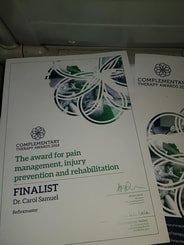 Highlights of 2018 One of the highlights for me in 2018, was becoming a finalist in the first ever, Complementary and Alternative Medicine Awards run by Chamberlain Dunn and supported by the Federation of Holistic Therapists. My interview of the UK Health Radio, and participating as a speaker in the first UK based Reflexology conference in four years held by the lovely Sue Ricks. My niece, Tina Signorelli who is a Master of Art, has produced some stunning charts for me (see pictures above) of the Spinal Nerves and Plexus and the Autonomic Nervous system on the feet. For those of you who participate in the workshops, I am delighted to say that you will receive an A4 copy of the two charts as part of your learning pack. |
AuthorDr Carol Samuel PhD Archives
October 2021
Categories |
|
© Copyright - Carol Samuel PhD 2018
All rights reserved |

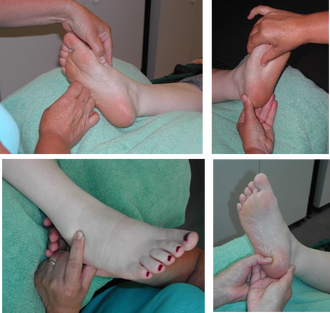
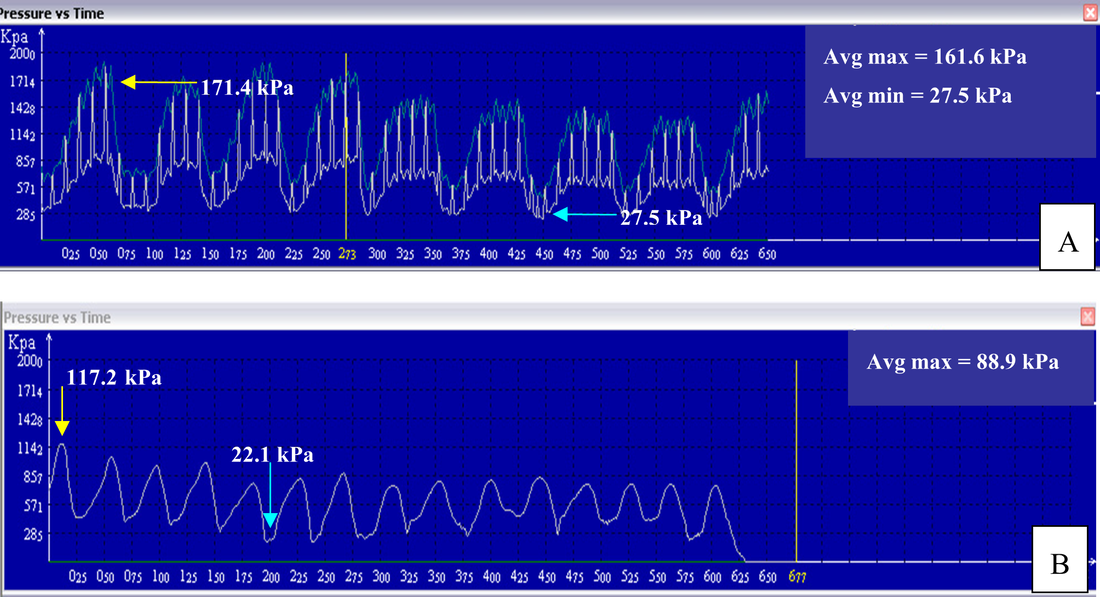
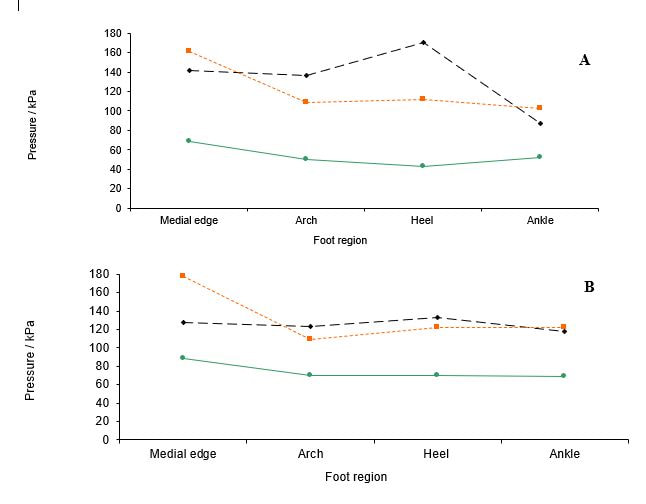
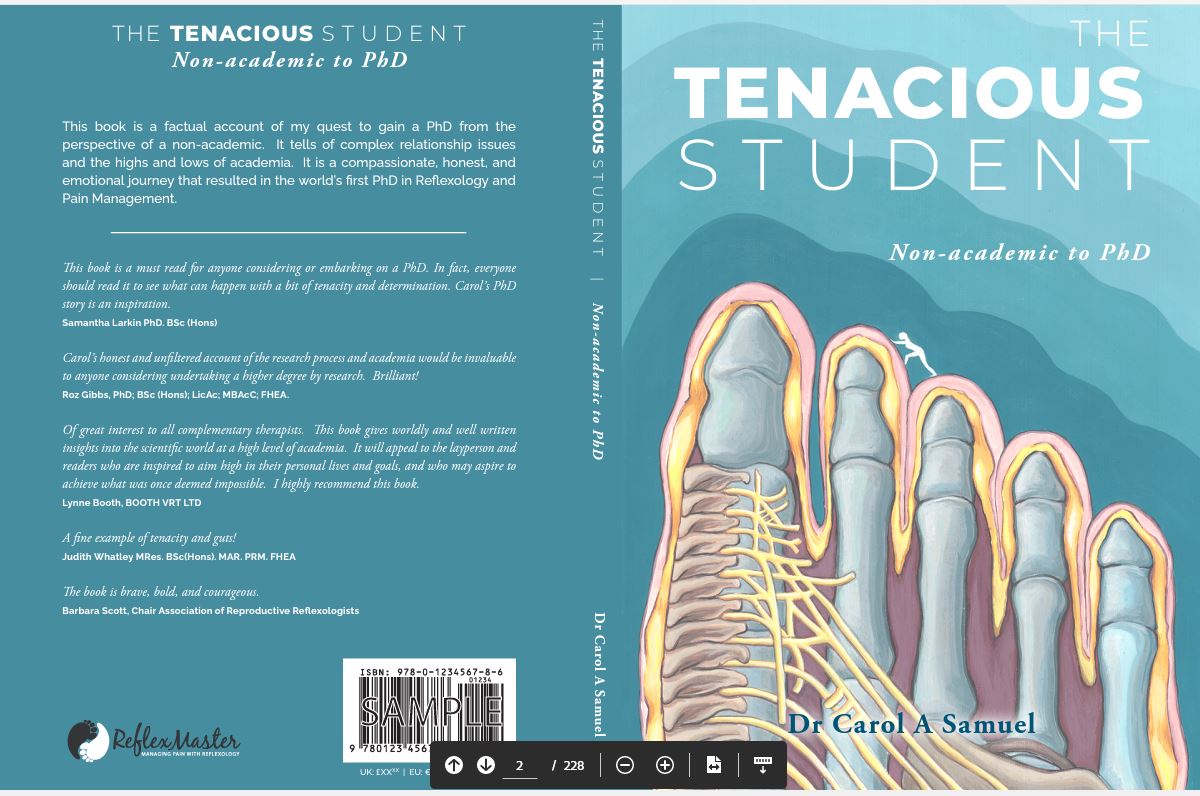
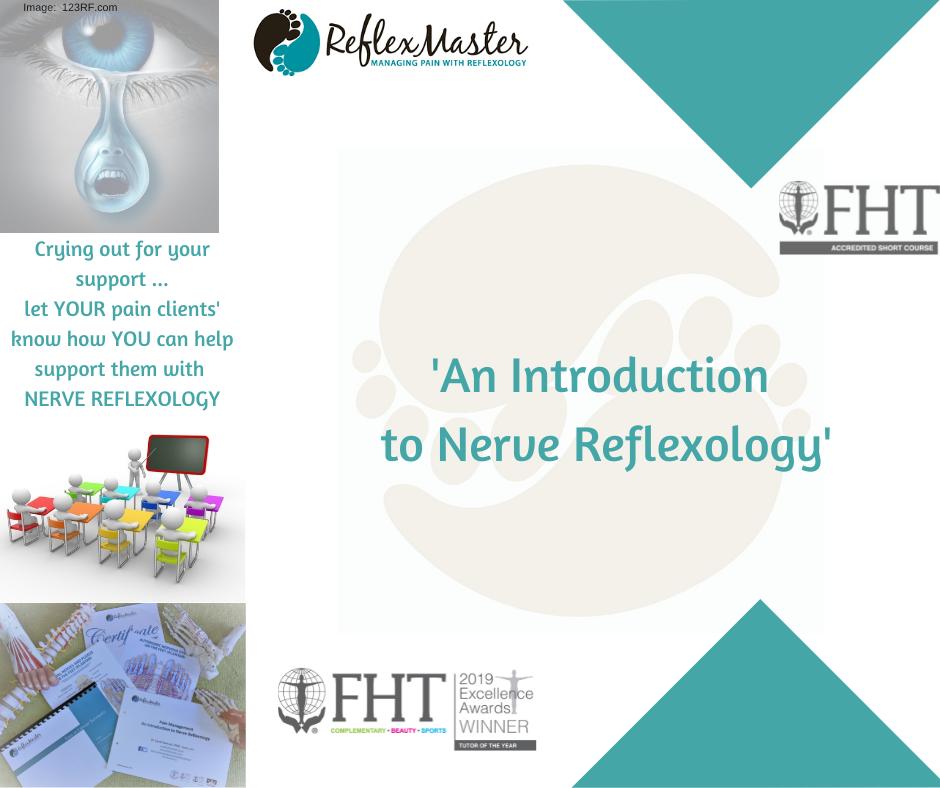
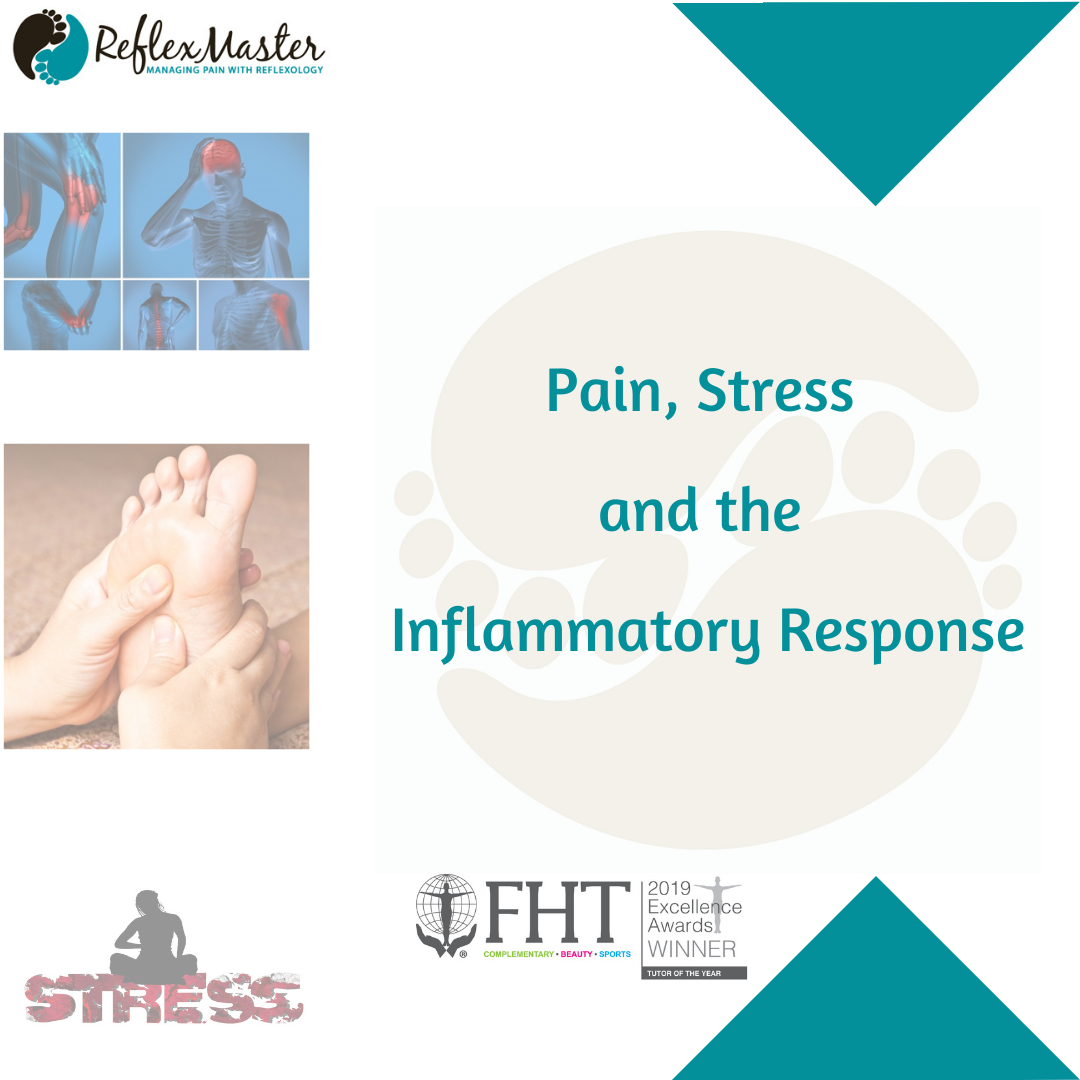
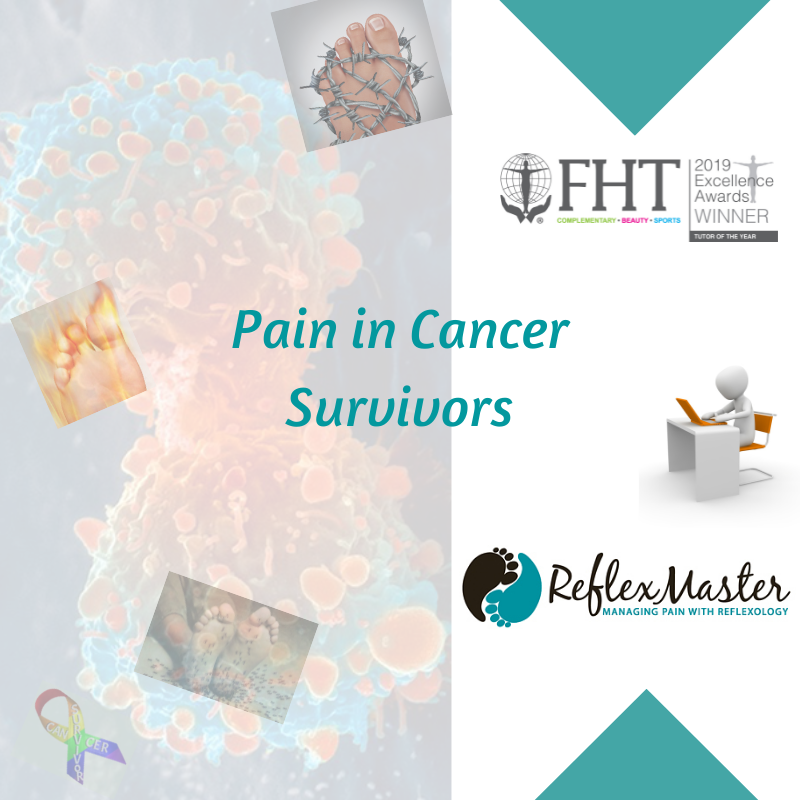
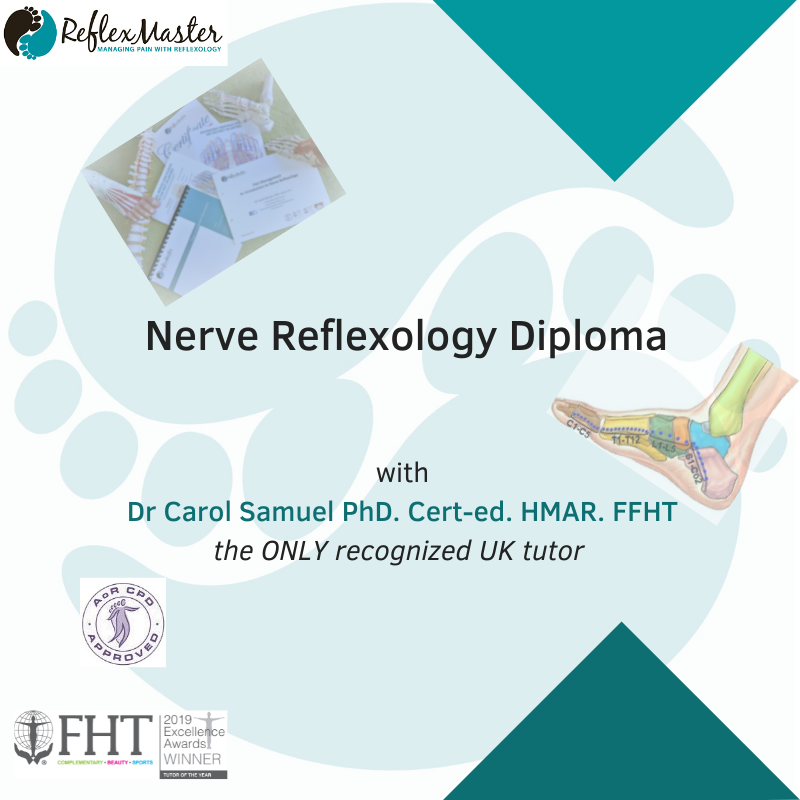

 RSS Feed
RSS Feed